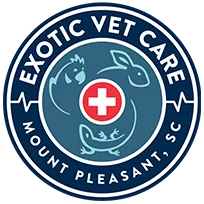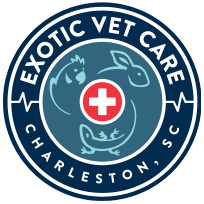
A sedated Kiawah Island bobcat has his picture taken prior to recovery and release after receiving an exam, blood draw and new GPS collar.
In 2019, I was fortunate to become involved in an ongoing study of bobcats on Kiawah Island with the Town’s biologists, Jim Jordan and Aaron Given.
The population of bobcats on Kiawah has one of the longest continuing studies in the world on this species. They have been trapping and putting GPS collars on individuals since 2007.
In 2017, they noticed a dramatic drop in the bobcat population and a concurrent rise in the deer population. Bobcats are important predators of deer fawns, and the loss of the top predator has had significant consequences for the ecosystem of the island. Currently bobcats on the island are estimated to be at or less than 10, down from 30-35 prior to 2017.
There didn’t seem to be a good explanation for the sudden drop in numbers until 2019 when Mr. Jordan submitted the body of a collared bobcat found dead to the Southeastern Cooperative Wildlife Disease Study (SCWDS) at the University of Georgia for necropsy and analysis. They discovered that the bobcat had died of exposure to a type of rodent poison known as an anticoagulant rodenticide.
Anticoagulant rodenticides are toxic chemicals that interfere with the uptake of Vitamin K in the body. Without it, the body cannot effectively produce the chemical reaction chain needed to clot blood and stop bleeding. The earliest of these types of chemicals to be used in rodent control are referred to as “first generation” anticoagulant rodenticides (FGAs), and include warfarin, chlorophacinone and diphacinone. These ingredients accumulate in the rodents from repeated ingestion of the poisoned bait and cause death from bleeding after about 3-7 days. Unfortunately, during that time, many rodents will become debilitated and engage in abnormal behavior, which attracts predators to an easy meal.
When predators eat intoxicated rodents, they may not immediately suffer the effects of the poison because the dose is too low. With the first generation rodenticides, secondary poisoning of predators was a serious problem, because they can continue to accumulate the rodenticides in their bodies as the predators ingest more and more of the intoxicated prey items. It takes over a month for animals to eliminate the FGAs from their bodies. If they reach a high enough level before they are able to clear the toxins, then they too will suffer the effects. Anticoagulant rodenticide secondary toxicity has been documented in many animals, especially birds of prey but also coyotes, raccoons, and other predator/scavenger species as well as pet dogs and cats.
The current problem, however, seems to be resulting from the use of newer and much more toxic types of anticoagulant rodenticides, known as “second generation” anticoagulants or SGAs. These chemicals include brodifacoum, bromidialone, difenacoum and difethialone. These are designed to be lethal to rodents after one dose, however because it still takes 3-7 days for the animals to die, they will often repeatedly feed on the bait. If a predator consumes them after ingesting this bait, the toxicity of the secondary ingestion that the predator will receive is much higher. These chemicals also take up to a year to leave the body. Thus, the SGAs put predators at much greater risk of accumulation over time.
In 2019 and 2020, with support from Exotic Vet Care and Daniel Island Animal Hospital, we were able to help the Kiawah Bobcat project by collecting blood samples and having them analyzed for blood counts, chemistries, coagulation times and traces of anticoagulant rodenticides. Based on necropsies, three collared bobcats have been definitively shown to have died from SGA toxicity on the island, including a mother who died while giving birth to kittens. One tested bobcat was definitively shown to have had a recent nonlethal exposure based on detection of the chemical in his blood, and three more are suspected to have been exposed to anticoagulant rodenticides based on bloodwork abnormalities.
So far, our data have helped to inform the ongoing effort by the town to limit or exclude the use of these pesticides on Kiawah until more can be understood about the factors that are playing a role in the steep bobcat population decline.

Dr. Rainwater draws blood from a sedated bobcat on Kiawah Island
We are hoping to continue this work in to 2021 and that through the cooperative efforts of biologists, veterinarians and volunteers, we can help the Town bring back a healthy bobcat population.
For more information please see:
www.savekiawahbobcats.com
https://www.youtube.com/watch?v=4D6TIck_Nu0

About Us
Our exotic animal hospital is dedicated exclusively to the care of birds, exotic small mammals, reptiles, and even fish! We can offer everything your pet needs for a healthy and happy life, from wellness care and grooming to diagnostics and dentistry, but we can also provide emergency care during our opening hours, along with more specialized treatment for referred patients.
